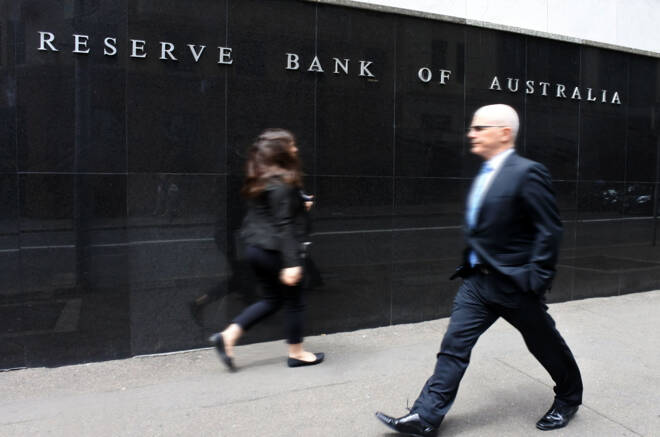Advertisement
Advertisement
RBA Meeting Minutes Signal Possible Halt on Rate Hikes
By:
This morning, the RBA meeting minutes revealed a finely balanced June interest rate decision, raising expectations of an end to the tightening cycle.
It was a busy start to the day, with central banks in the spotlight.
Early this morning, the PBoC provided further policy support to the Chinese economy by cutting Loan Prime Rates. In line with expectations, the PBoC cut the 5-year LPR from 4.3% to 4.2% and the 1-year LPR from 3.65% to 3.55%.
However, the PBoC move had a limited impact on the global financial markets, with investors awaiting a stimulus package from Beijing.
In contrast, the RBA Meeting Minutes did garner plenty of interest. After the surprise 25-basis point RBA hike this month, forward guidance on the economic outlook, inflation, and interest rates were areas of interest.
The RBA Meeting Minutes
Salient points from the RBA Meeting Minutes included,
- While passing its peak, inflation remained well above target and was forecast to return to the top of the target range by mid-2025.
- Consumer spending softened significantly despite little spare capacity and a very low unemployment rate.
- Higher interest rates and high inflation weighed on household spending power. However, the economy appeared to be moving on a narrow path on which inflation returns to target while the unemployment rate remains low.
- Regarding the risks to the inflation outlook, members noted the surprise upside in headline inflation in April. There was a more moderate fall in goods price inflation relative to other countries.
- Service price inflation showed no signs of easing, suggesting persistence.
- Indexation of wages to past high inflation and firms indexing prices to past inflation increased the risk of persistently high inflation, which would make it more difficult to keep the economy on the narrow path.
- Housing loan approvals indicated that credit conditions may not be as tight as previously considered. House price gains would also suggest less drag on consumer spending.
- Considering the current dynamics, the balance of risks on inflation shifted to the upside. However, downside risks included a slowdown in household spending, falling commodity prices, and lower shipping costs.
- Looking ahead, the outlook for household spending and financial stresses on some households remains uncertain.
- Considering the uncertainty, members would continue to monitor trends in household spending and consider the implications for the inflation outlook, developments in the global economy, and the domestic labor market.
- While members remained committed to bringing inflation to target, the minutes revealed the decision to lift rates was finely balanced, suggesting a possible end to further rate hikes.
AUD/USD Reaction to the RBA Meeting Minutes
Ahead of the RBA Meeting Minutes, the AUD/USD fell to a low of $0.68427 before rising to a pre-minutes high of $0.68552.
However, in response to the minutes, the AUD/USD rose to a high of $0.68525 before sliding to a low of $0.68078. The finely balanced June monetary policy decision weighed.
This morning, the AUD/USD was down 0.57% to $0.68105.
Next Up
With the RBA in the spotlight, RBA assistant governors Bullock and Kent will speak post-RBA minutes.
Looking toward the US session, Fed Chair Powell testimony will be the focal point. Hawkish comments will likely to fuel a dollar breakout. FOMC members Bullard and Williams are also on the calendar to speak.
Overnight, the markets were still betting on hawkish policy moves.
According to the CME FedWatch Tool, the probability of a 25-basis point July rate hike stood at 74.4%, up from 59.9% one week earlier. The chances of the Fed lifting the Fed Funds Rate to 5.75% in September increased from 13.1% to 13.4%.
On the US economic calendar, building permits and housing starts are likely to play second fiddle to Fed Chair Powell.
About the Author
Bob Masonauthor
With over 28 years of experience in the financial industry, Bob has worked with various global rating agencies and multinational banks. Currently he is covering currencies, commodities, alternative asset classes and global equities, focusing mostly on European and Asian markets.
Advertisement
